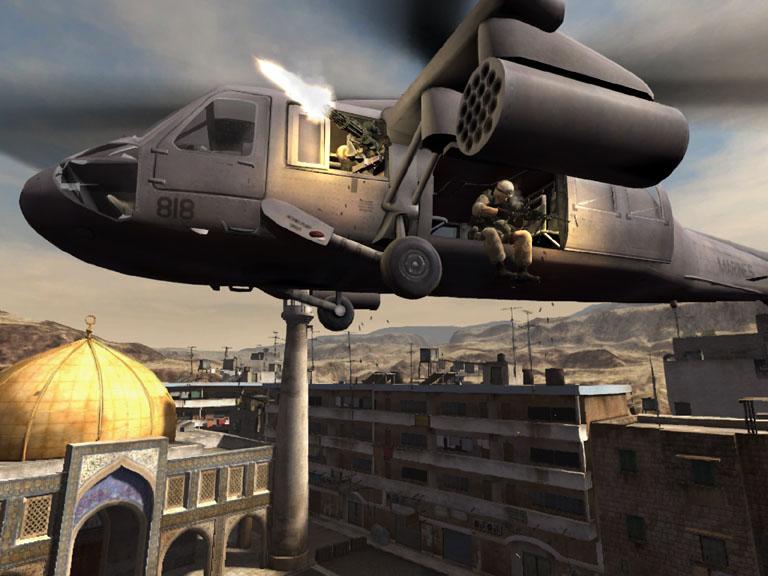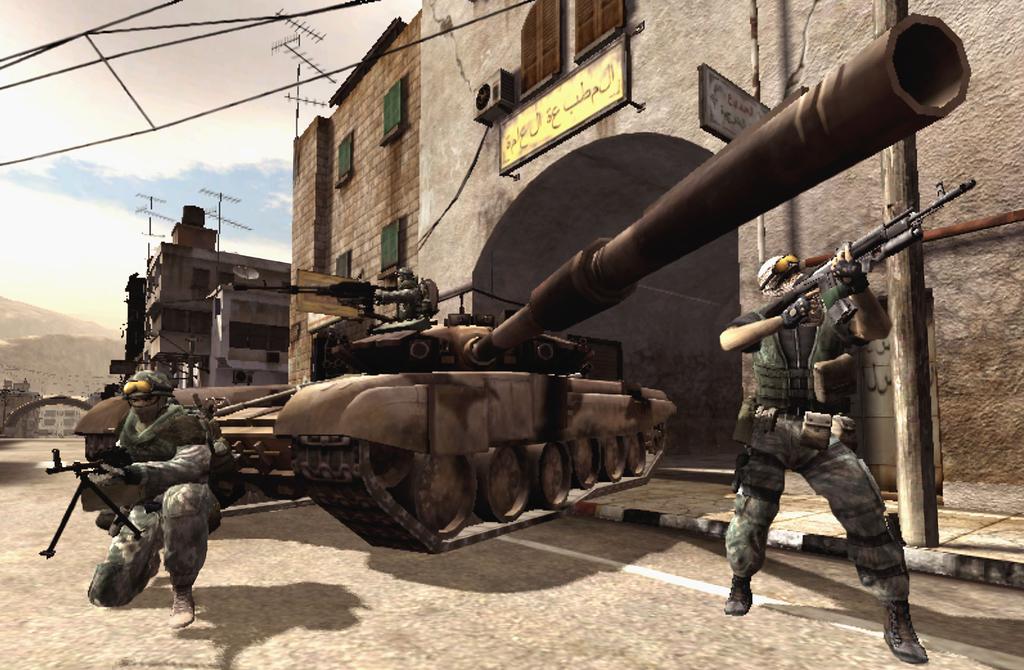Battlefield 2 E3 2004 Impressions
We get a close-up look at the modern-day Battlefield sequel and its new engine, global rankings, and more.
Digital Illusions has put out three Battlefield titles since Battlefield 1942 skyrocketed up the charts in 2002, but one look at Battlefield 2 makes it clear that there's been a lot of work behind the scenes to produce a true sequel. With a new graphics engine, audio engine, and physics engine, Battlefield 2 is technically a full jump ahead of previous games in the series. But just as important are the moves to both make the game more persistent and flesh out the ranking system.
Battlefield 2 moves the action to the modern-day Middle East and Far East, which sets the stage for battles between much-more technologically advanced vehicles. The goal is to provide the feel of modern combat's complexity without making the gameplay too complex. Jumping into a US antiair vehicle, we saw an example of this in a more interactive HUD, which highlights aircraft with a triangle and starts locking its heat-seeking missiles on. The aircraft itself gets a lock-on warning and can start dropping flares, which show up as heat sources in the HUD. Whether or not the missile hits, the gunner can fire away at the same time with AA cannons. We also saw an impressively large and detailed M1 Abrams tank parked on the street, which is just one of the many modern vehicles in the game.
The dusty urban map we saw demonstrated that while the new setting doesn't have the lush vegetation of Battlefield Vietnam, there'll be no lack of environmental detail, in part due to a new rendering engine that produces dynamic lighting and shadowing. There are also destructible elements in the maps, and material penetration is now being modeled, so a wall made out of sheet metal might hide you, but it won't stop bullets. Besides the shadows on objects and players as you move from shadow into the bright Middle Eastern sunlight, the effect is now quite apparent on your hands and gun on the screen. Player models are now fully tied in to a rag-doll physics system, which not only models the bodies but also has helmets flying off and rolling away. Vehicle effects haven't been ignored either, since AA guns throw out shells and missiles spurt lingering smoke. And the new audio engine now uses EAX's 3D effects for sound occlusion and more. We hardly heard an approaching chopper, because the sound was blocked by buildings. This changed once the bird came into the open and the chop of the blades echoed and provided an appropriate Doppler effect.
The core Battlefield gameplay will be quite similar, except for the addition of new classes and the integration of the stats and experience system. There are two new player classes: a heavy-weapons support class, which carries claymore mines and lots of extra ammo that can be shared by teammates, and a special ops class, which sneaks around and blows stuff up. Support classes, like the medic and engineer, may see a new surge in popularity, since class-specific stats are now being stored so that you can try to be the world's best medic. But no matter what class you choose, you can track a huge variety of stats in a new, persistent interface, and the experience from battles accrues to unlock additional weapons, which EA said aren't necessarily "better" (presumably for balance reasons) but are different.
Working together as a team should also be quite a bit more intuitive in the new game, with contextual orders and a team-chat system. Instead of just hitting the function keys to cue preset audio, you can highlight an enemy or a location with the reticle, press Q, and fire to issue an "enemy spotted" or "contact spotted" warning, which is accompanied by a visual cue on the minimap. A proper squad system will also be in place to give squad leaders the ability to track squad members on the HUD or to pop up a full-screen command map to issue location-specific plans and orders. The map in this view zooms to increased detail levels so that you can assign commands to individual buildings.
Battlefield 1942's support for 64 players seemed like a technical feat in 2002, but when the new game bumps that number to 100 and beyond, EA says the real challenge is keeping maps interesting and manageable for a variety of player numbers. One feature that will address this is that each map has a number of different sizes, and the map size is automatically selected to be appropriate for the given number of players selected by the server admin.
Battlefield 2 is currently scheduled for release in early 2005. EA did comment that Trauma Studios--responsible for the highly popular modern-day Desert Combat mod--is playing some part in the game's development, but it is primarily being developed by Digital Illusions in Sweden.
Got a news tip or want to contact us directly? Email news@gamespot.com


Join the conversation